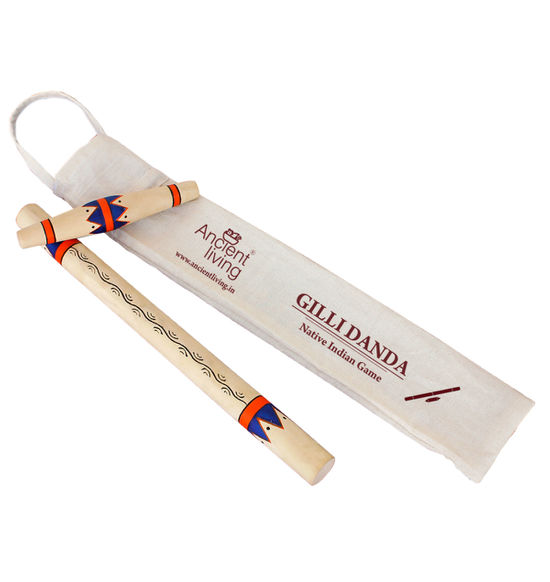Gilli Danda is derived from ghaṭikā [ghaṭ a+ka], literally “tip-cat”. An explanatory definition is given in the commentary as ghaṭikā is “a game played using two sticks: one long and the other short. It is played by hitting the shorter stick with the longer one.” Ghaṭikā is still known to countries from the Indian subcontinent and south Asian countries like Bangladesh, India, Sri Lanka. In Bangladesh, it is known as ḍāṅguli khelā; while in Nepali, it is known as Dandi Biyo. The longer stick in a ḍāṅguli khelā, should be about 1 1⁄2 ft (0.46 m) and the shorter stick about 6 in (150 mm) There are certain rules for preparing the sticks and playing the game with them.
Gilli Danda
History
Gilli Danda is an amateur sport, originating from the Indian subcontinent, played in the rural areas and small towns all over South Asia as well as Cambodia, Turkey, South Africa, Italy and in some Caribbean islands like Cuba. The game is played with two sticks: a large one called a danda (Dandi in Nepali, Dandu/दांडू/ದಾಂಡು in Marathi and Kannada), which is used to hit a smaller one, the Gilli (Biyo in Nepali, Viti/विटी in Marathi and Chinni/ಚಿನ್ನಿ in Kannada).
Gilli Danda is an ancient sport of the Indian subcontinent, possibly with origins over 2500 years ago.

Rules
“Gilli Danda” is played with two pieces of equipment – a danda, being a long wooden stick, and a gilli, a small oval-shaped piece of wood. It is played with four or more players of even numbers. Or even 100 players.
Standing in a small circle, the player balances the gilli on a stone in an inclined manner (somewhat like a see-saw) with one end of the gilli touching the ground while the other end is in the air. The player then uses the danda to hit the gilli at the raised end, which flips it into the air. While it is in the air, the player strikes the gilli, hitting it as far as possible. Having struck the gilli, the player is required to run and touch a pre-agreed point outside the circle before the gilli is retrieved by an opponent. There are no specific dimensions of gilli danda and it does not have limited number of players.
The gilli becomes airborne after it is struck. If a fielder from the opposing team catches the gilli, the striker is out. If the gilli lands on the ground, the fielder closest to the gilli has one chance to hit the danda (which has to be placed on top of the circle used) with a throw (similar to a run out in cricket). If the fielder is successful, the striker is out; if not, the striker scores one point and gets another opportunity to strike. The team (or individual) with the most points wins the game. If the striker fails to hit the gilli in three tries, the striker is out (similar to a strikeout in baseball). After the gilli has been struck, the opposing players need to return to the circle or, in the best case, catch it in mid-air without its hitting the ground – this was believed to have later evolved into a Catch Out in cricket and baseball.
How to play?
1) Divide the players into two teams. Let any of the two players be the captains.
2) Toss a coin. The team which wins the toss can select batting or fielding but not both.
3) Make the circle with a hole in the center where the batsman will bat.
4) The player of the batting team will use danda to bat, while fielding team is spread in the ground to field. There is no bowler in this game.
5) The batsman hits the gilli at one tapered ends with his danda, and quickly strikes it.
6) If the batsman strikes the gilli which no fielder is able to catch, then the danda is used to measure the distance from the circle to the point where gilli fell. Each danda’s length adds one point to the batting team.
7) If the batsman is unable to strike the gilli in 3 continuous chances, the batsman is out.
8) If the batsman strikes the gilli and the fielder catches it before it touches the ground, then the batsman is out.
9) The next player of his team comes to bat.
10) Repeat the above steps unless all the players of the batting team are out. Calculate their total points.
11) Now the fielding team will bat and the batting team will start fielding. The above steps for the batting team will remain the same.
12) The team with maximum score will win the match.

Equipment
It is usually played by using a small round stick, about as long as a baseball or cricket bat. This is the danda. There is another smaller stick, round in the middle and tapering towards the ends. This is the gilli. The game gilli-danda is similar to cricket.

